Abstract
The majority of nurses surveyed used the library on a regular but limited basis to obtain information needed in caring for or making decisions about their patients. A minority indicated that the libraries in their own institutions totally met their information needs. In fact, only 4% depended on the library to stay abreast of new information and developments in the field. Many of the nurses had their own journal subscriptions, which could account in part for the limited use of libraries and the popularity of the professional journal as the key information source. This finding correlates with the research of Binger and Huntsman, who found that 95% of staff development educators relied on professional journal literature to keep up with current information in the field, and only 45% regularly monitored indexing-and-abstracting services. The present study also revealed that nurses seek information from colleagues more than from any other source, supporting the findings of Corcoran-Perry and Graves. Further research is necessary to clarify why nurses use libraries on a limited basis. It appears, as Bunyan and Lutz contend, that a more aggressive approach to marketing the library to nurses is needed. Further research should include an assessment of how the library can meet the information needs of nurses for both research and patient care. Options to be considered include offering library orientation sessions for new staff nurses, providing current-awareness services by circulating photocopied table-of-contents pages, sending out reviews of new monographs, inviting nurses to submit search requests on a topic, scheduling seminars and workshops that teach CD-ROM and online search strategies, and providing information about electronic databases covering topics related to nursing. Information on databases may be particularly important in light of the present study's finding that databases available in CD-ROM format are consulted very little. Nursing education programs should be expanded to include curricula bibliographic sessions where the librarian, in cooperation with the teaching faculty, visits the classroom to explain all pertinent information sources or invites the class to the library for hands-on demonstration and practice. Nurses who gain working knowledge of the tools that open the doors to retrieval of research findings and who have information about new innovations in medicine and medical technology have superior chances for success in their chosen profession.
Full text
PDF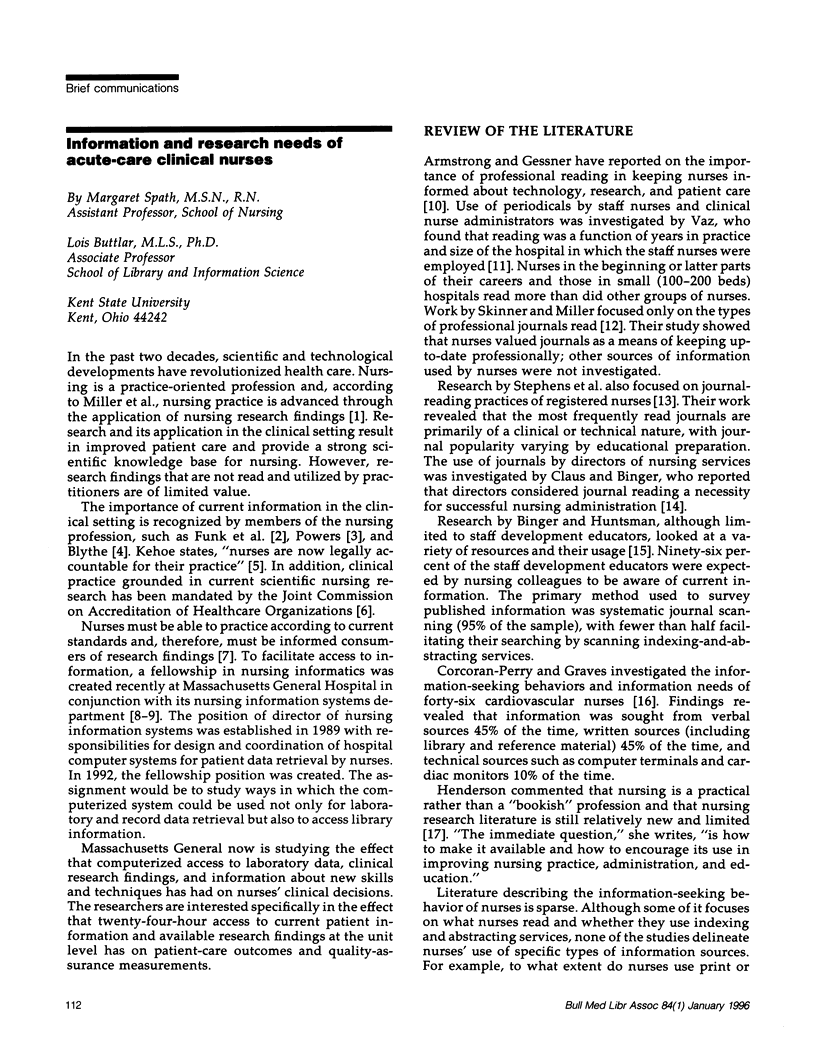
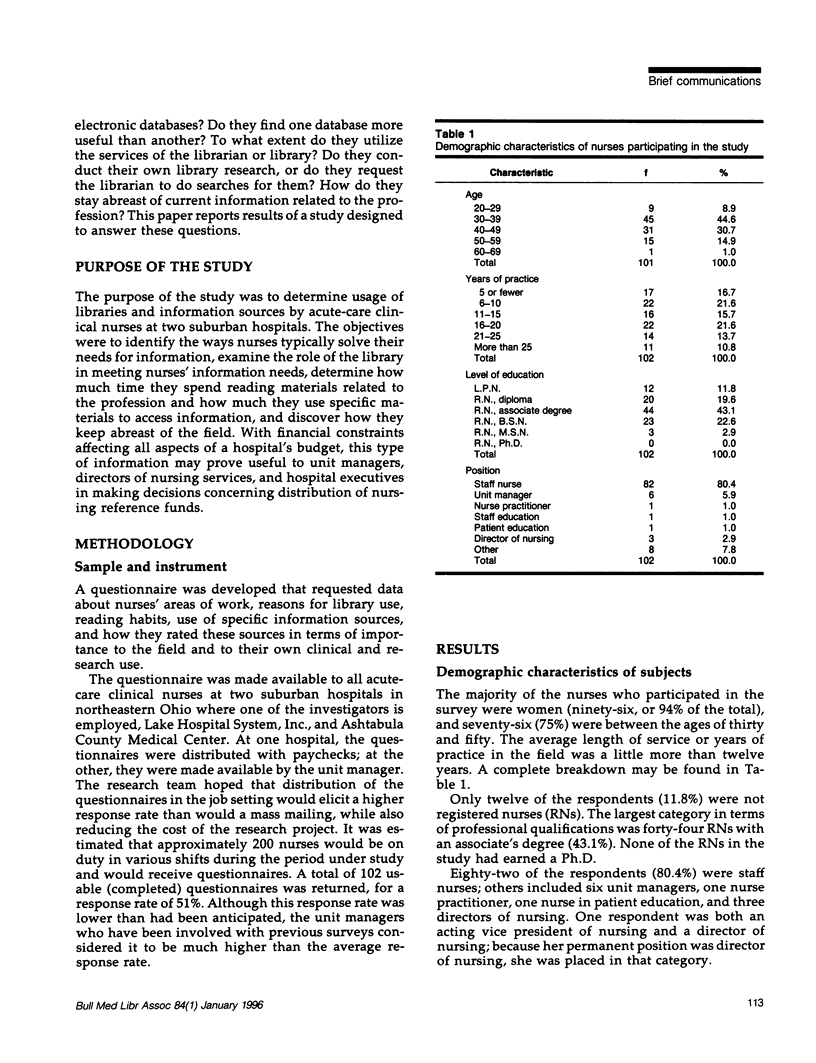
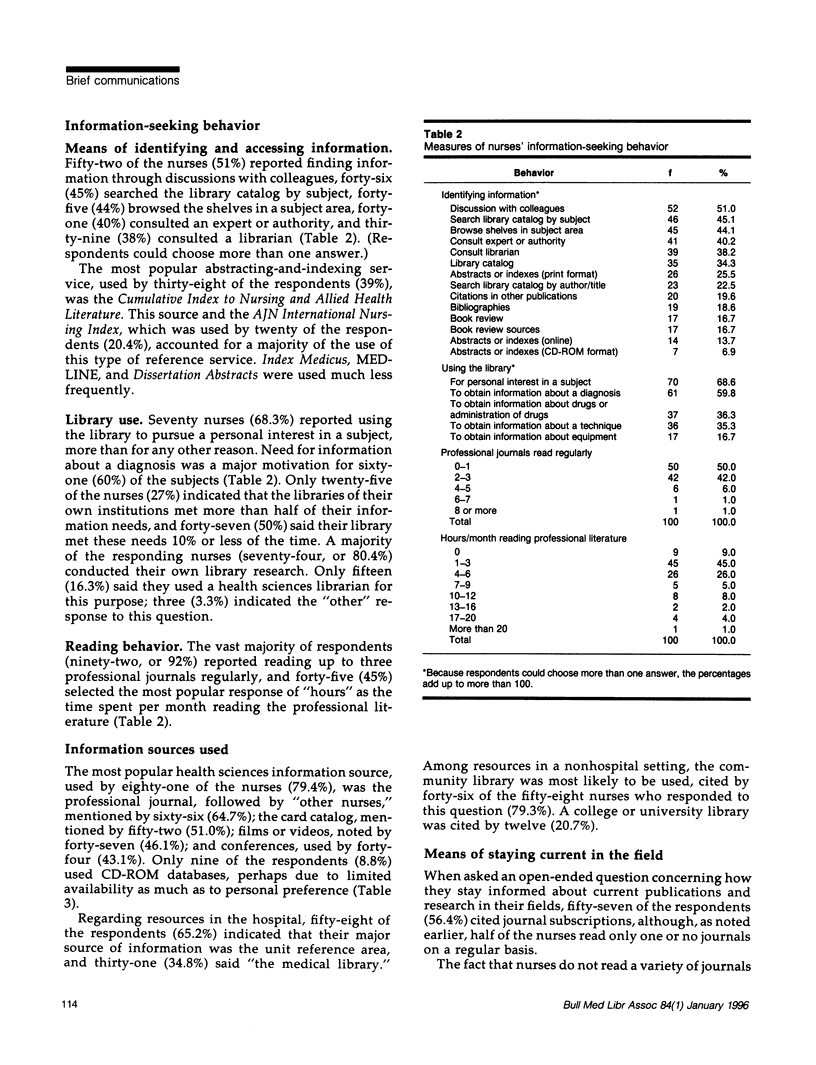
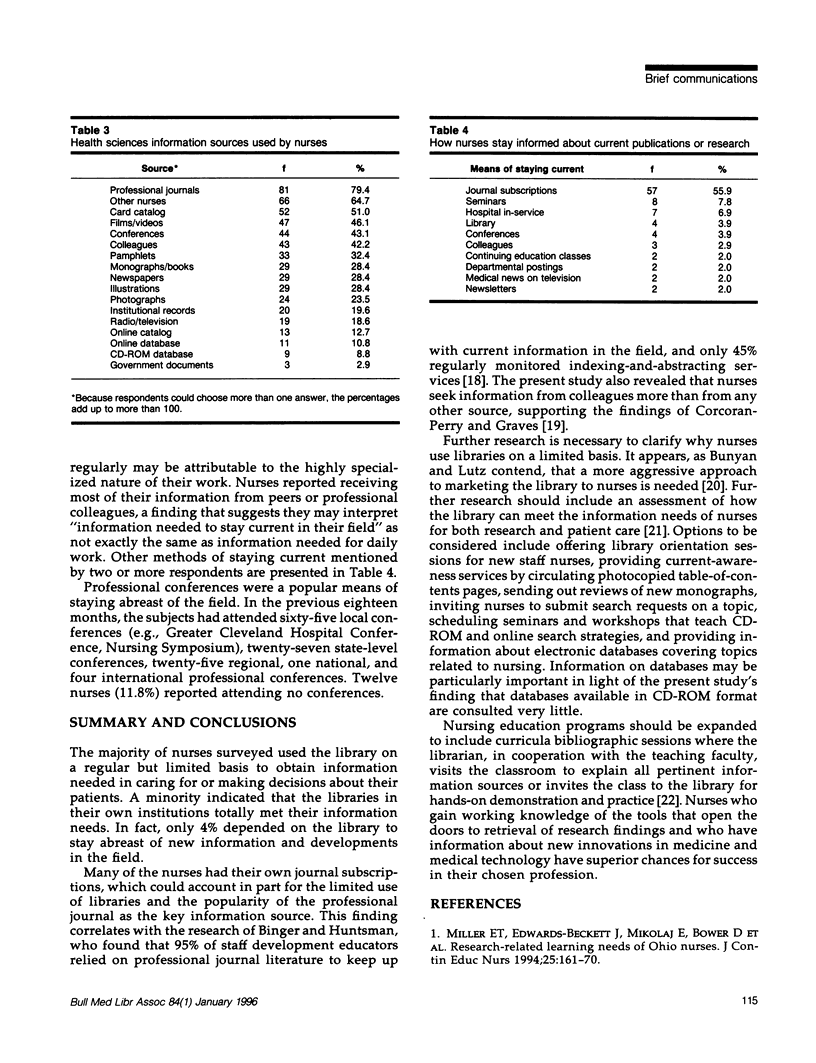
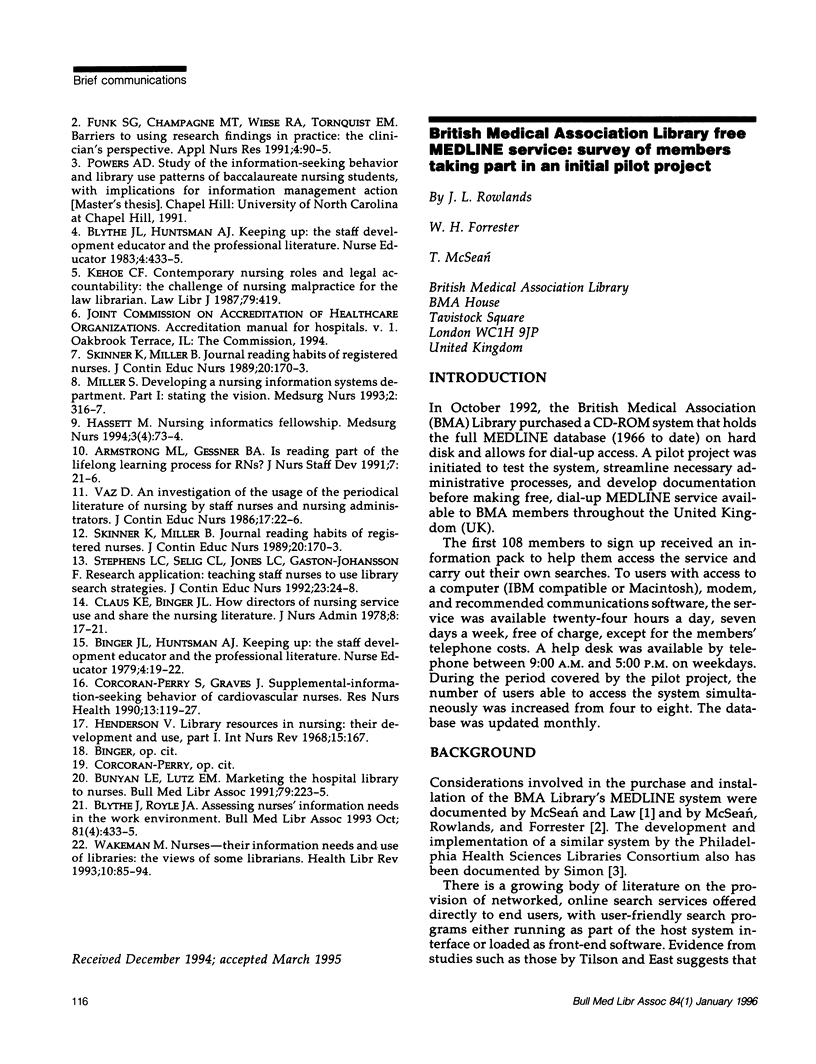
Selected References
These references are in PubMed. This may not be the complete list of references from this article.
- Armstrong M. L., Gessner B. A. Is reading part of the lifelong learning process for RNs? J Nurs Staff Dev. 1991 Jan-Feb;7(1):21–26. [PubMed] [Google Scholar]
- Binger J. L., Huntsman A. J. Keeping up: the staff development educator and the professional literature. Nurse Educ. 1979 May-Jun;4(3):19–22. doi: 10.1097/00006223-197905000-00004. [DOI] [PubMed] [Google Scholar]
- Blythe J., Royle J. A. Assessing nurses' information needs in the work environment. Bull Med Libr Assoc. 1993 Oct;81(4):433–435. [PMC free article] [PubMed] [Google Scholar]
- Bunyan L. E., Lutz E. M. Marketing the hospital library to nurses. Bull Med Libr Assoc. 1991 Apr;79(2):223–225. [PMC free article] [PubMed] [Google Scholar]
- Claus K. E., Binger J. L. How directors of nursing service use and share the nursing literature. J Nurs Adm. 1978 Nov;8(11):17–21. doi: 10.1097/00005110-197811000-00016. [DOI] [PubMed] [Google Scholar]
- Corcoran-Perry S., Graves J. Supplemental-information-seeking behavior of cardiovascular nurses. Res Nurs Health. 1990 Apr;13(2):119–127. doi: 10.1002/nur.4770130208. [DOI] [PubMed] [Google Scholar]
- Funk S. G., Champagne M. T., Wiese R. A., Tornquist E. M. Barriers to using research findings in practice: the clinician's perspective. Appl Nurs Res. 1991 May;4(2):90–95. doi: 10.1016/s0897-1897(05)80062-x. [DOI] [PubMed] [Google Scholar]
- Hassett M. Nursing informatics fellowship. Medsurg Nurs. 1994 Feb;3(1):73–74. [PubMed] [Google Scholar]
- Millar S. Developing a nursing information systems department. Part I: Stating the vision. Medsurg Nurs. 1993 Aug;2(4):316–317. [PubMed] [Google Scholar]
- Skinner K., Miller B. Journal reading habits of registered nurses. J Contin Educ Nurs. 1989 Jul-Aug;20(4):170–173. doi: 10.3928/0022-0124-19890701-08. [DOI] [PubMed] [Google Scholar]
- Skinner K., Miller B. Journal reading habits of registered nurses. J Contin Educ Nurs. 1989 Jul-Aug;20(4):170–173. doi: 10.3928/0022-0124-19890701-08. [DOI] [PubMed] [Google Scholar]
- Stephens L. C., Selig C. L., Jones L. C., Gaston-Johansson F. Research application: teaching staff nurses to use library search strategies. J Contin Educ Nurs. 1992 Jan-Feb;23(1):24–28. doi: 10.3928/0022-0124-19920101-07. [DOI] [PubMed] [Google Scholar]
- Vaz D. An investigation of the usage of the periodical literature of nursing by staff nurses and nursing administrators. J Contin Educ Nurs. 1986 Jan-Feb;17(1):22–26. doi: 10.3928/0022-0124-19860101-08. [DOI] [PubMed] [Google Scholar]
- Wakeham M. Nurses--their information needs and use of libraries: the views of some librarians. Health Libr Rev. 1993 Jun;10(2):85–94. doi: 10.1046/j.1365-2532.1993.1020085.x. [DOI] [PubMed] [Google Scholar]


